Following a childhood amidst political activists which led to a career as a banner maker, Emma Shankland has turned to hand embroidery as a slow and gentle contrast to narrate her observations in a more peaceful way.
Still a banner-maker and community engagement lead for Durham Banner Makers in the North-East of England, Emma creates modern twists on a traditional art form in her large-scale banners which have been shown in the British Textiles Biennial exhibitions. She chooses to work on silk for the multiple personalities and dimensions it offers by its light absorption and displacement. The sight of a completed silk banner flying in the wind is, to Emma, worth the hours of intensive research and community collaboration that go into making each one.
Emma started creating her detailed hand embroidered pieces to combine story-telling with the celebration of stitch, drawing a narrative into a physical landscape. She builds layered textures with fabric and common sewing thread and is increasingly incorporating a 3D element into her work. Combining sculpture, fantasy and fragments of memory to draw the viewer in, her pieces allow for multiple interpretations. Fabric is the ground and thread the narrator’s pathway.
Emma has a Masters degree in Art Museum and Gallery Education from the UK and Honours Diploma Sculpture/Installation from Ontario, Canada. She has spoken on recorded panels for ‘Sew What’ and ‘Talking Banner Culture’ alongside other leading textile artists.
In 20 years of travelling, she has worked as a fruit picker in Europe and a costume-maker in Canada, with many other adventures along the way.
In our interview with Emma she describes her stitching journey through giving jumble sale garments new life to creating costumes and textile art, and how a three-week holiday turned into a 20-year international work and study adventure. She describes her passion for the tactility and malleability of fabric and the gentle, time-consuming nature of hand stitch with thread.
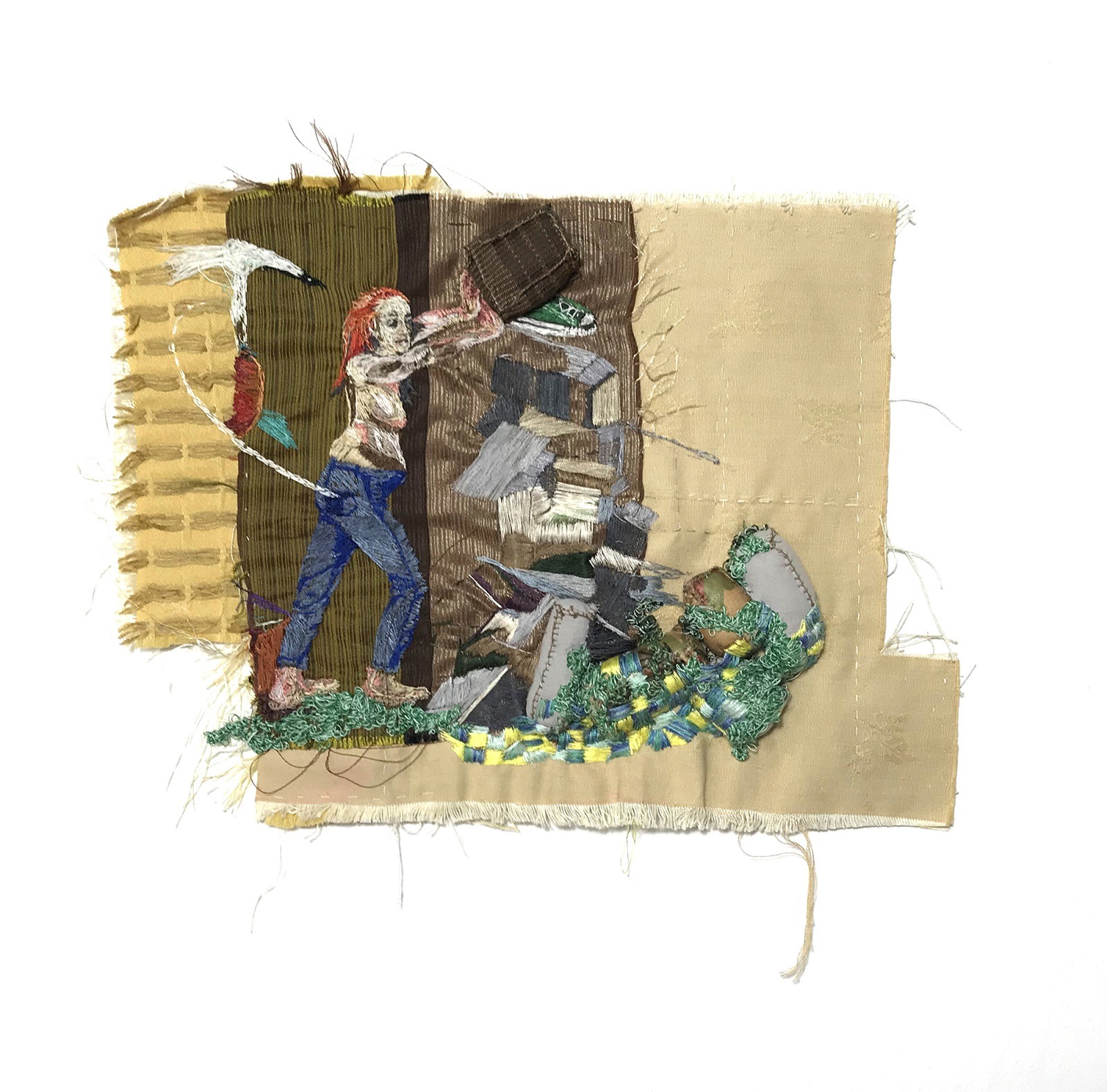
Tactility and malleability
TextileArtist.org: What initially attracted you to textiles as a medium? How was your imagination captured?
Emma Shankland: Fabric is one of the most giving mediums I’ve worked in. There’s a direct relationship between it and the hands that shape an idea – a story into existence. The only separation is a needle whose slight form extends the artist’s fingers.
I’ve used fabric to narrate ideas for as long as I remember, from giving jumble sale garments a new life to building wall installations that creep into and transform the physical environment. It’s the tactility and malleability that attracts me. The feel of multiple textures, weights and, of course, colour.
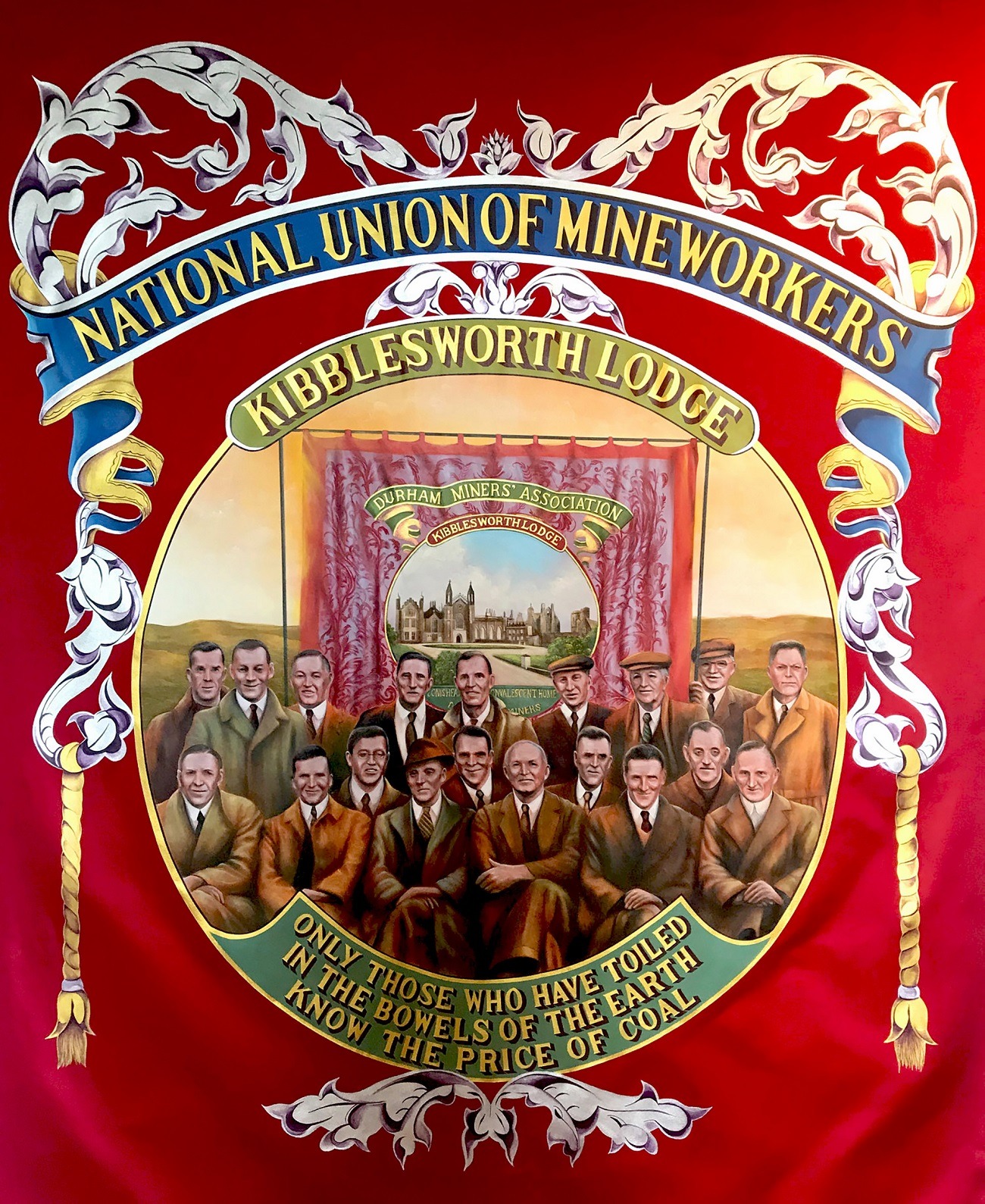
What or who were your early influences and how has your life/upbringing influenced your work?
I grew up in the North East of England but spent a lot of time in Italy. The two environments were equally influential in extremely different ways.
Coming from a political, creative home, our house was often filled with people making banners and placards in support of CND, anti-apartheid, and, in 1984-85, the miner’s strike. I’ve always been very aware of the impact of mass demonstrations and large scale messaging.
In Italy creativity was more transformative and subtle. Light and texture still play a huge part in my work, as does the idea of peeling away the present to expose a glimpse of the past.
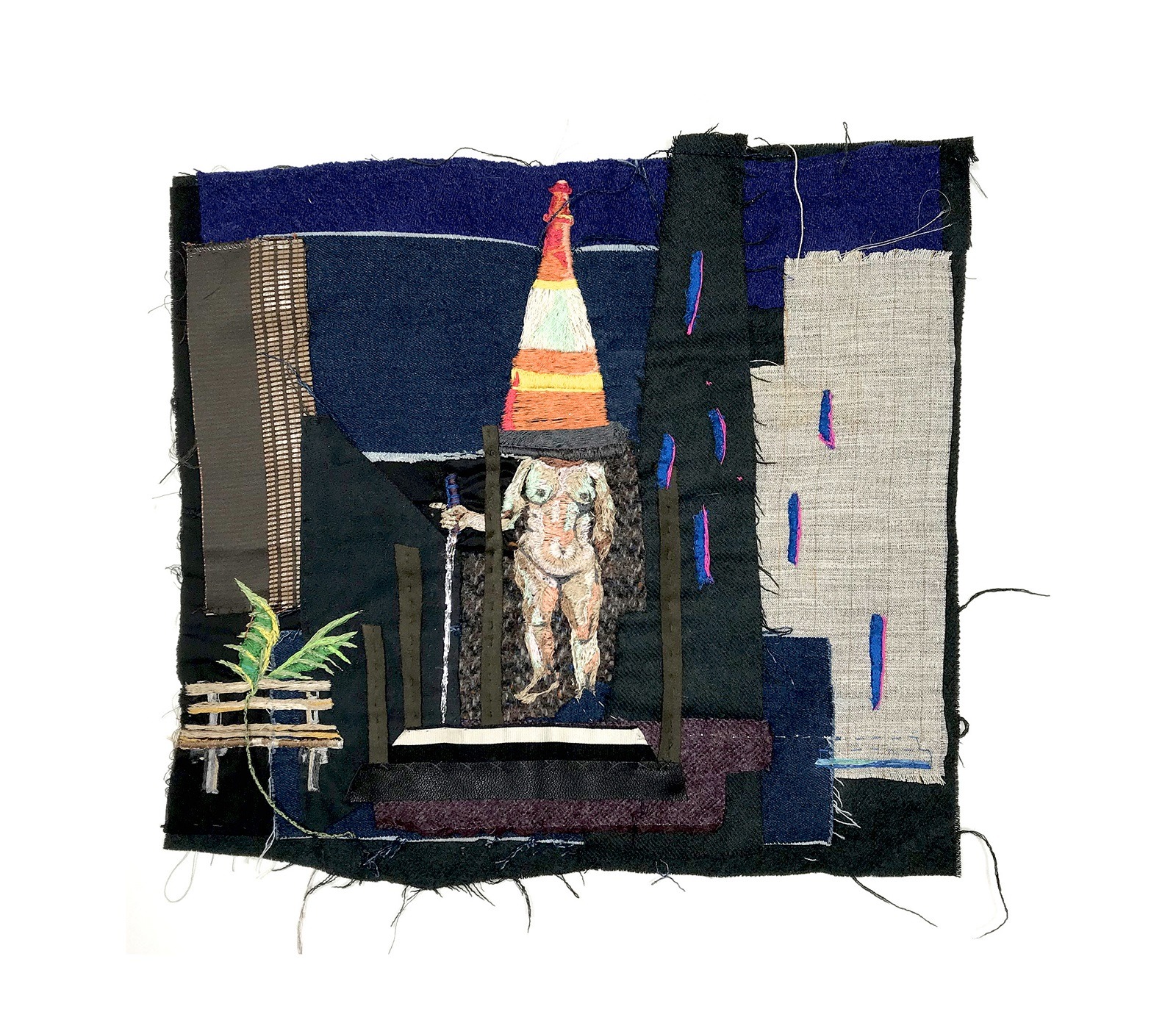
What was your route to becoming an artist?
I left England in 1990 on a three-week holiday and returned in 2010. ‘Victoria Park’ is a nod to the moment when I sat on a park bench in Athens, Greece and took the decision not to return to the UK.
During this 20 year period I worked throughout Europe and Asia in a variety of jobs from picking fruit to teaching English and ended up settling in Canada where I initially apprenticed as a costume maker and built props for large scale stage productions.
Throughout my years of travelling I kept journals, upcycled found objects and furniture and created environments that reflected my travels and experiences.
In 2000 I went to Ontario College of Art and Design in Toronto, Canada and started a four-year sculpture/ installation programme that enabled me to finish my thesis year at an off-campus studio in Florence, Italy. On returning to Canada I received a scholarship that included use of a studio for a year and allowed me to continue exploring materials and shapes whilst working full time as a mascot builder.
I am definitely a maker rather than a conceptual artist.
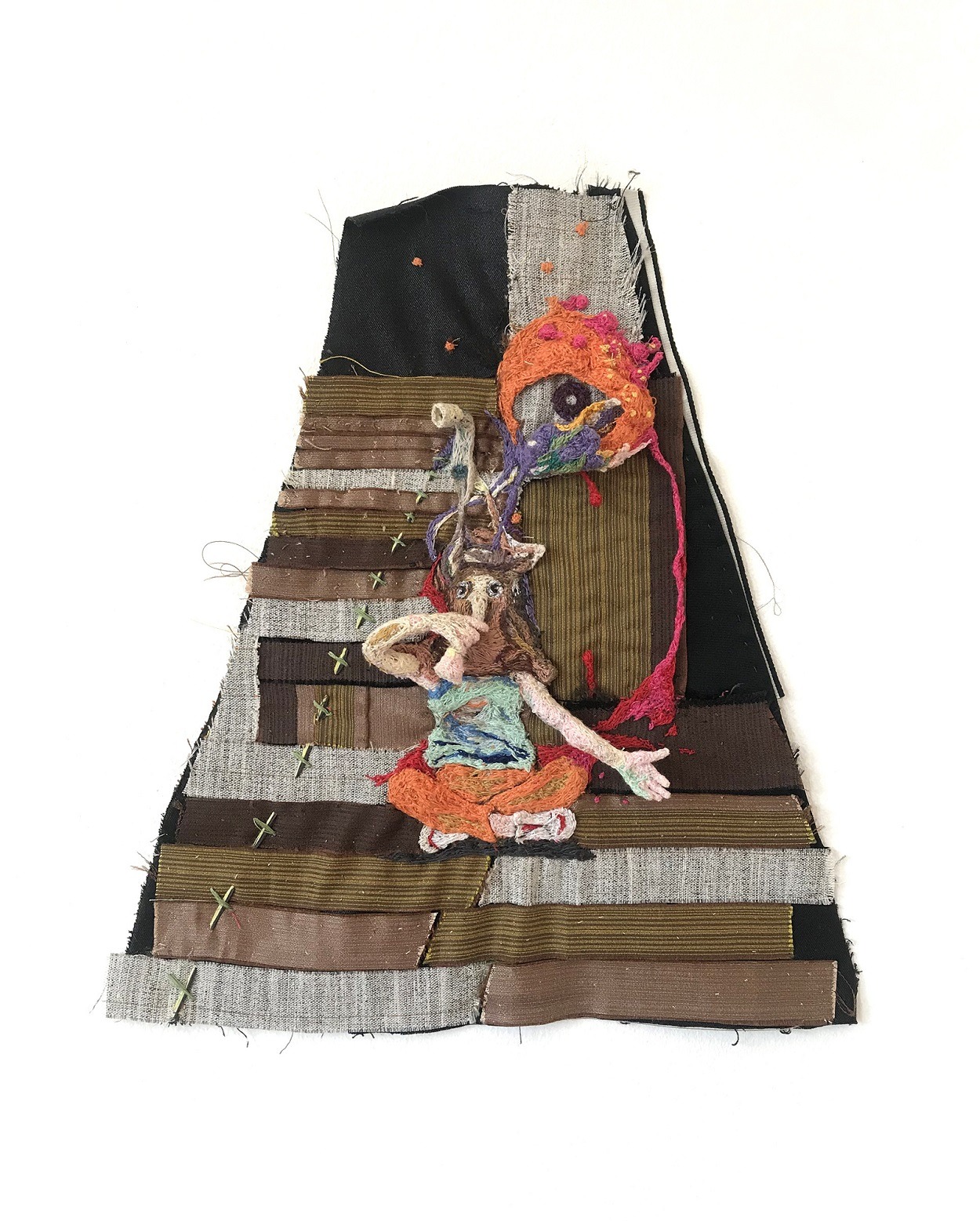
Piercing and pulling
Tell us about your process from conception to creation
It takes a determined effort to re-engage, re-energise and stimulate creativity after a hiatus caused by life’s demands. I started embroidering as it was easy to pick up and leave between family commitments and work commissions. I had to be strict and dedicated with the time I gave it, trusting in the process of making to liberate a pathway to creativity.
Hand embroidery is generous as it offers time to reflect and inspire whilst the hand repeats the physical rhythm of piercing and pulling. One of the beautiful things about this process is the meandering journey you have to take from conception to the last stitch. For me, this is one of the essential differences between hand and machine stitch embroidery.
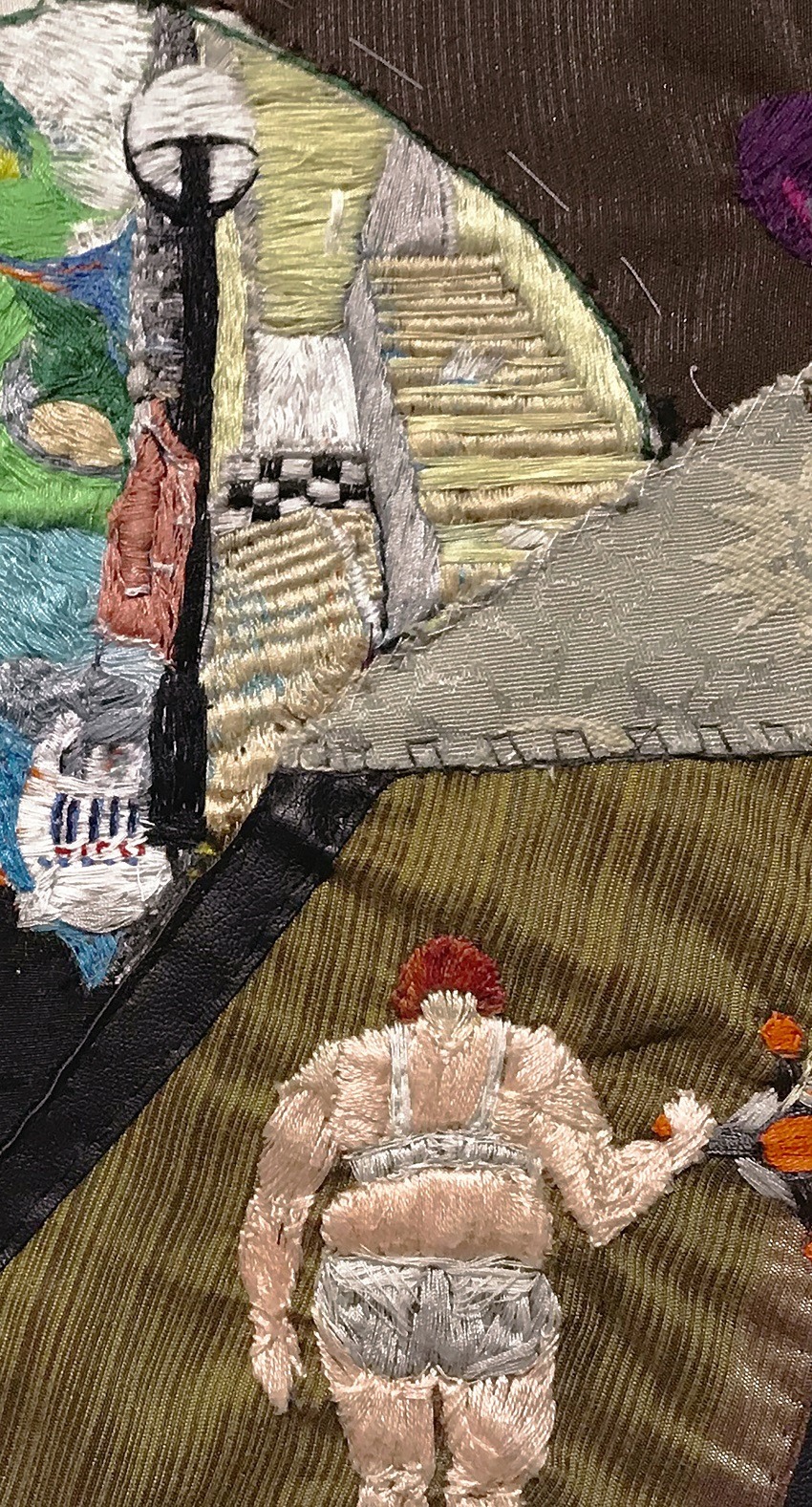
Having gained control and direction with the themes and subjects I want to explore, there’s still an excitement watching the outcome develop. For instance, I’m progressively including three-dimensional elements. Often these have a significant impact on the grounds’ fibres which means having to go back in and re-work and re-envision new ripples and tensions in the material to add to rather than detract from the story. Because I use normal sewing thread rather than embroidery thread which I find bulky and invasive, added tension is created in the treatment of the ground.
My embroidery has a deliberate ambiguity that encourages different view points and interpretations, it’s the opposite of the banners I paint which have a direct message enforced by the images and slogans. The two outlets enable me to express in extremely different ways without blurring the integrity of either one.
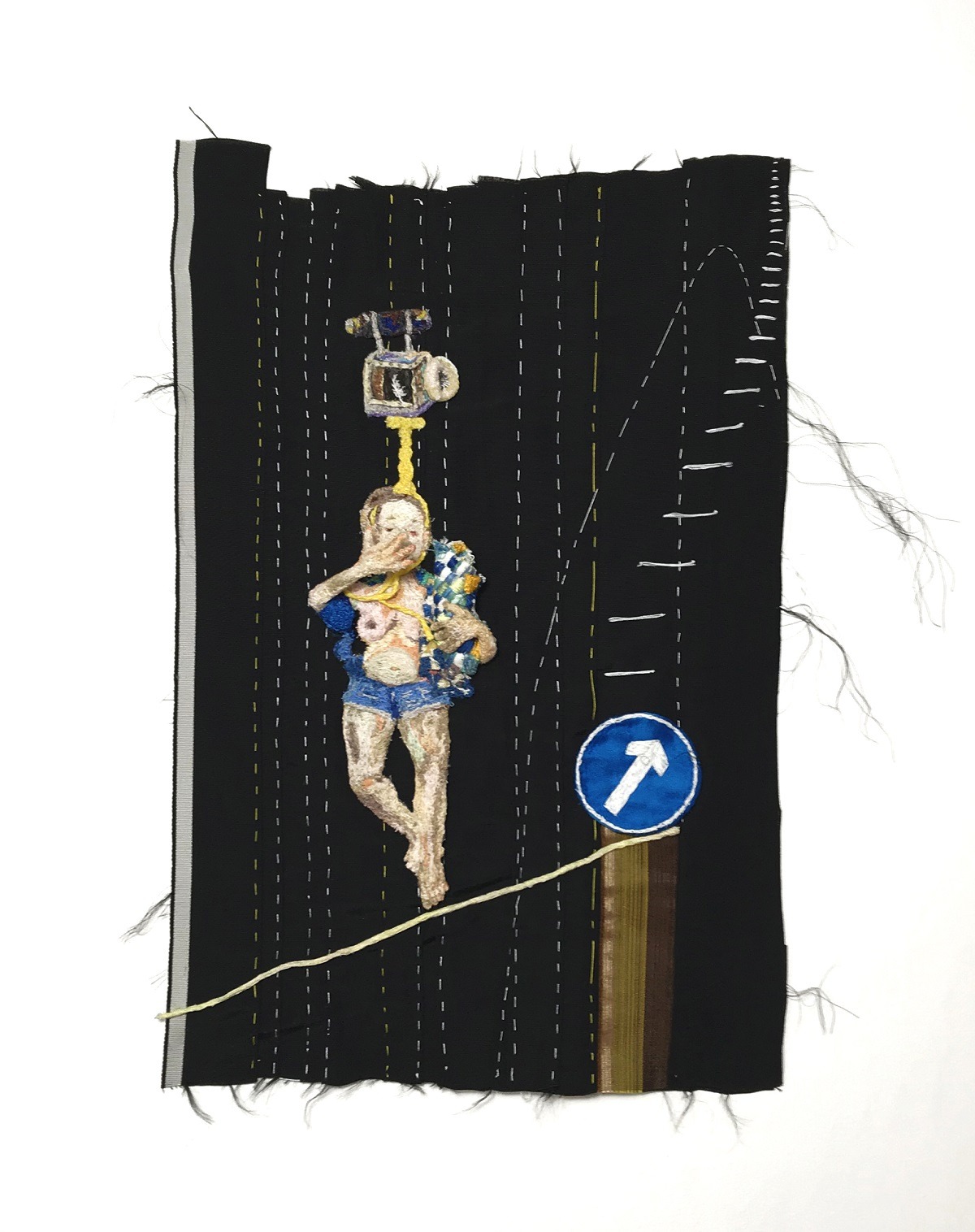
What currently inspires you?
Banners give my political energy a focus and outlet whilst embroidery allows the process, the act of making, to have a heavy hand. The gentle, time-consuming action can also enable inspiration to occur subliminally, rising to the surface in unexpected ways that can lead to a realisation over a period of days. A series of pieces I recently completed began in this way. They were very much centred around the idea of movement and blockage, recognising a moment in the past and letting go.
Hand embroidery’s enabled the exploration of life changing events in a very intimate and cathartic way.
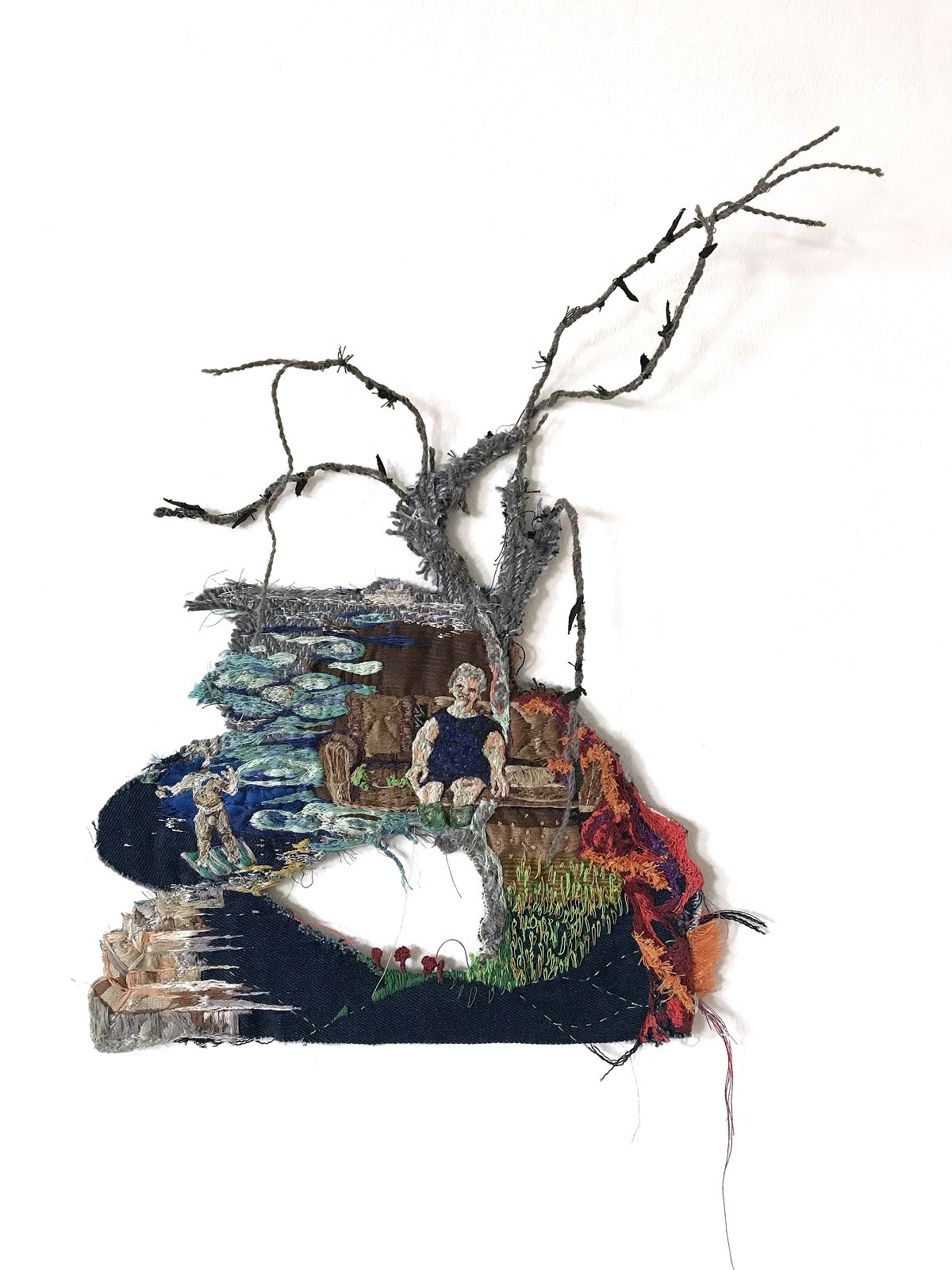
Indulgent and moving journey
Tell us about a piece of your work that holds particularly fond memories and why?
In. 2019 I visited an elderly family member who started talking about her experiences raising three boys. After some wild stories she paused and said ‘ I’d Have Given An Eye For A Daughter’. The desire and grief behind those words was transparent. The work came easily and encouraged other ideas for larger projects.
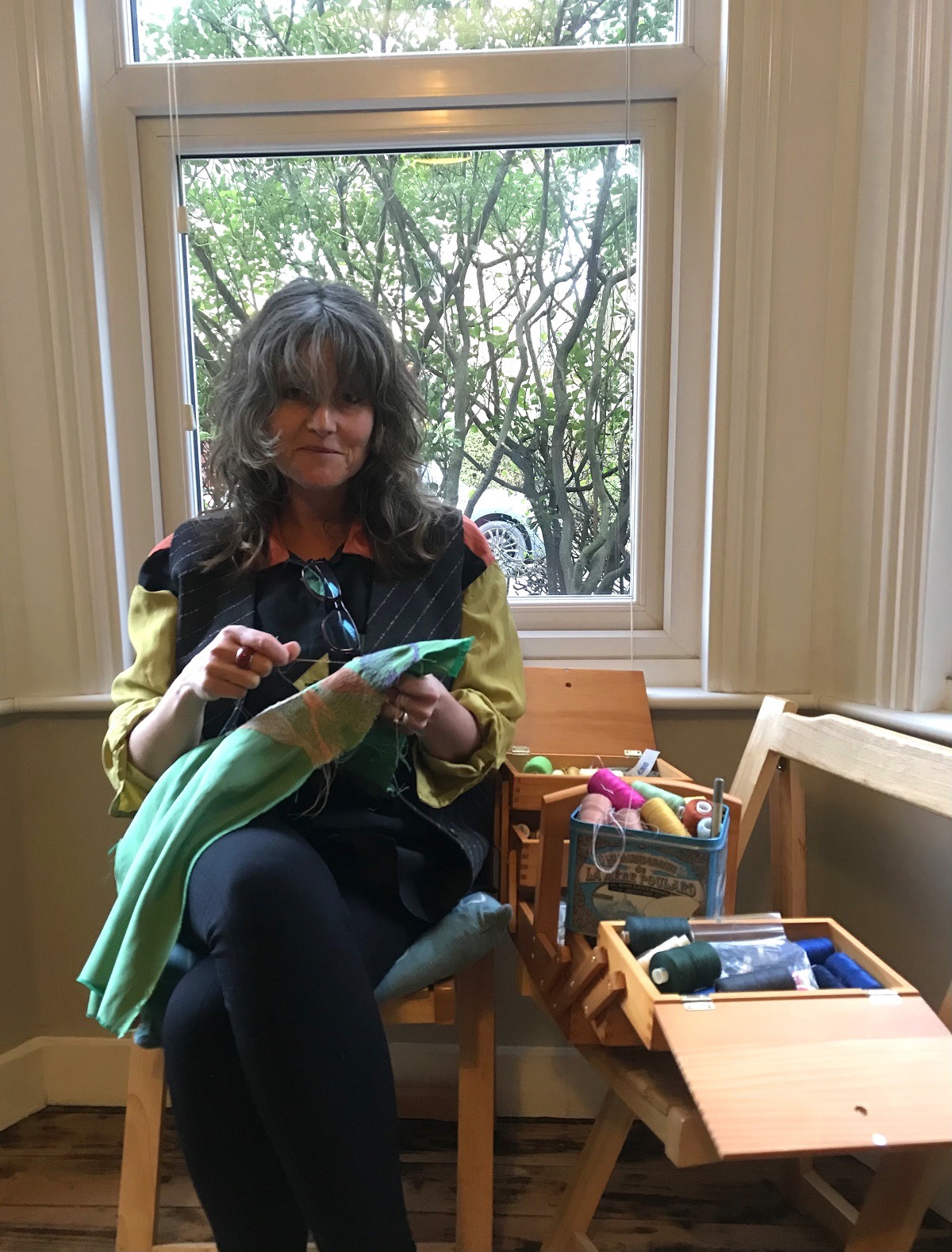
How has your work developed since you began and how do you see it evolving in the future?
It’s been an indulgent and moving journey getting to know the medium of hand embroidery and progressively pushing what can be done with it. With experience I can take more chances.
I’m currently laying in the ground for an ambitious three-dimensional piece that I hope will work it’s way out of the fabric into free space. This creates a multitude of challenges and adds on weeks more work, but I’m not interested in taking the easy way out and am patient with the process. This doesn’t mean I’m restrictive or pure in my approach, it just works for me right now.
For more information visit www.emmashankland.co.uk
Has Emma’s work and story inspired your plans and projects? Let us know in the comments below.
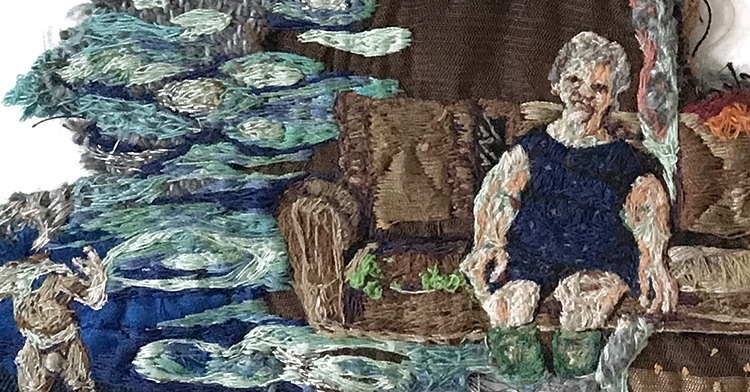
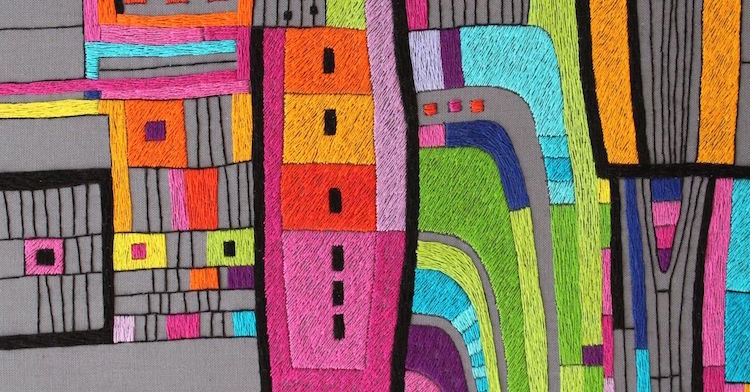
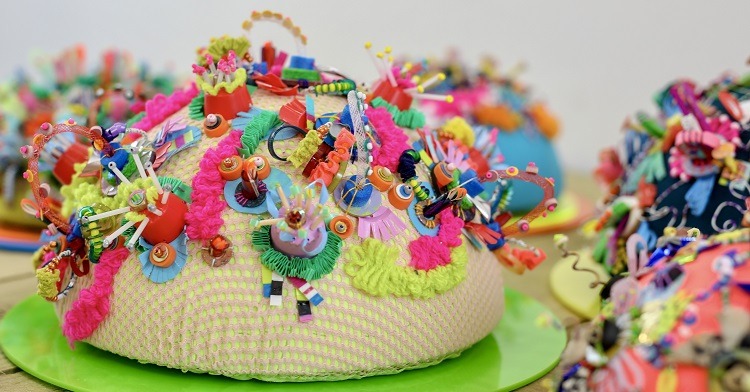
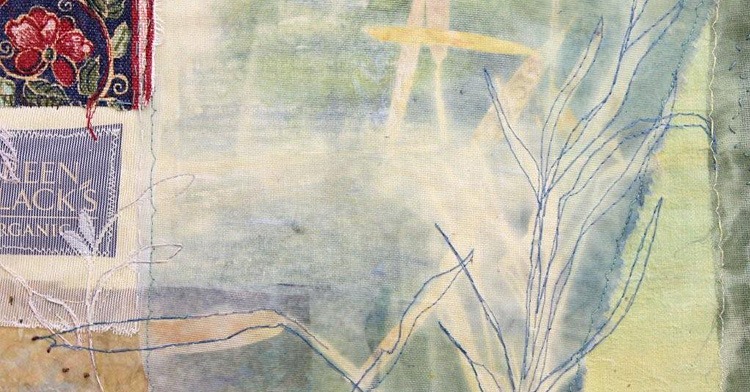
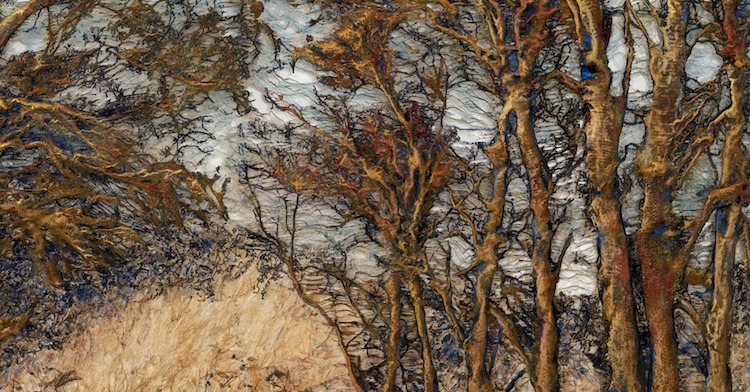
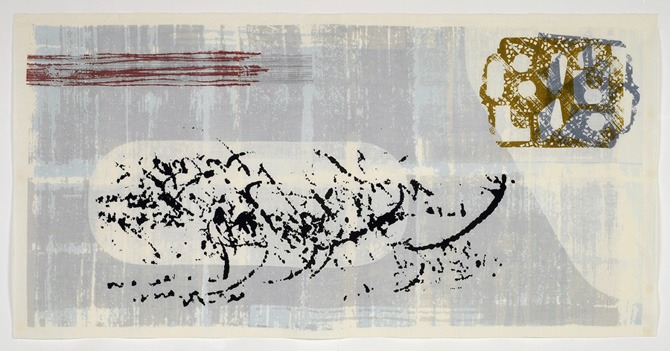
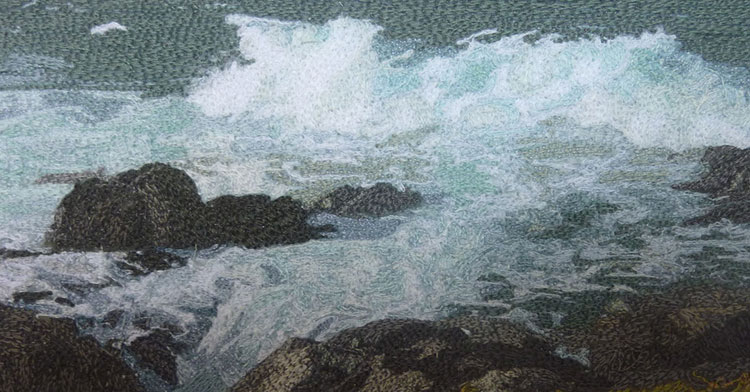
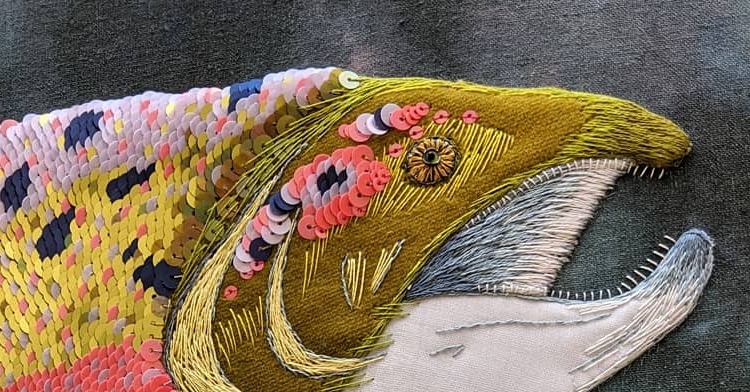
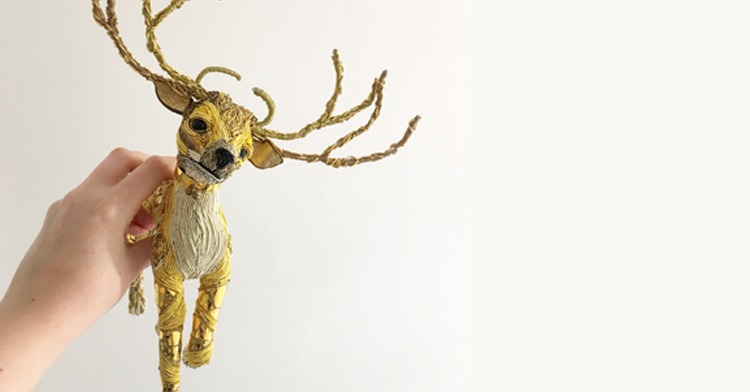
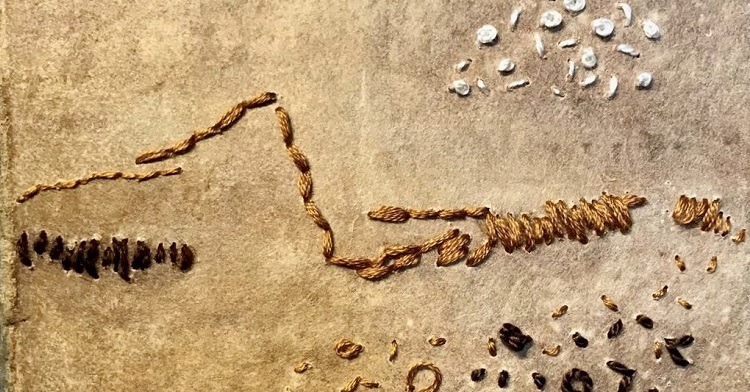
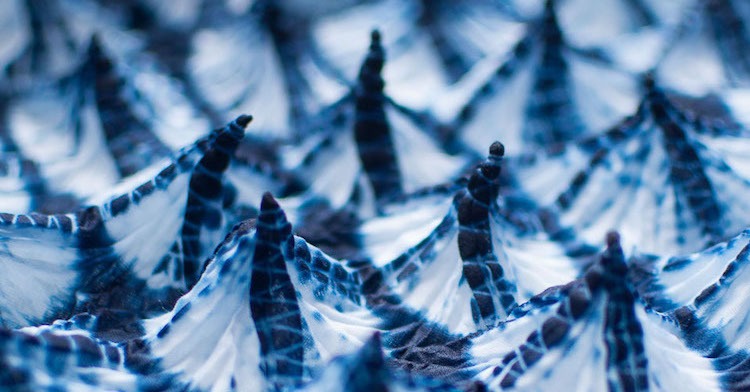
7 comments
Linda F Martin
Whimsical, Marvelous works of art! Thank you.
Margot
Spectacular, thank you.
Daniela Tiger
I love Emma’s comment about hand embroidery allowing time for reflection and contemplation thru the slow, repetitive action. It speaks to me and my current work. Previously I used free motion sewing with my machine as my marking tool and it was fast and furious, unforgiving but fun. Since covid I have slowed down and enjoy the pace that hand embroidery offers. Thank you so much for sharing this work and these ideas,
Daniela
Lynda Myers
I admire Emma’s disciplined oeuvre.
After years of travel and exploration,
she curates the solitary journey:
Value, color, tone, placement, repetition;
curator of its one-stitch-at-a-time becoming.
Jana
A very unique focus for textile art. The very detailed and not detailed features of the pieces creates a fascinating contrast. Makes me want to study each piece. Work with heart. Thanks so much for featuring Emma and her work.
Barbara
Sehr eigen und inspirierend!
Danke !
Jennifer
Emma’s work is simple yet stunning. Thankyou for featuring her. She is inspirational.